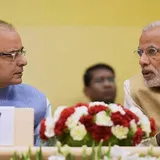
PM Of India , Mr Narender Modi 1. A Report – Yes But along with Draft of a New Law. For those who thought that it would only be a report outlining the big ticket changes that need to be made, here is the big surprise… the Task Force report is accompanied by a draft of the new income tax law, running into over 3sections and with attention given to the minute details. Dividend Distribution tax (DDT) The government had also introduced Dividend Distribution tax (DDT) on dividend options of equity funds. With the new corporate tax rate of , India is competing with countries like Singapore (), Ireland (1 ), UK (), US (), Vietnam (), Thailand (), Taiwan () etc. The reduction of the corporate tax rate is in consonance with the global trend and a globally recognized method of boosting dying economies.
TAX REFORM IN INDIA : ACHIEVEMENTS AND CHALLENGES M. Another key objective of tax reform measures has been to increase total tax to GDP ratio as a means of achieving fiscal consolidation and improving resource allocation. As a result of tax reform measures , tax revenues increased to 18. Effective taxes and tax reform in India.
Inequality has increased in recent years in both developed and developing countries. Tax experts, like others, have focused on how taxes may reduce this growing inequality of income and wealth. In developed countries, the income tax , and especially the personal income tax ,. See all full list on yourarticlelibrary. Under the slate of reforms announced on Friday, India will lower its corporate tax rate to from for. Here’s what it means.
Manufacturing in India will get a booster as the lower corporate tax rate and an even lower rate on new production units will drive in investments for finished products as well as ancillaries. Each of the measures introduced under the Ordinance are discussed below: 1. Reduction in Corporate tax rates. Stabilization was necessary in the short run to restore balance of payments equilibrium and to control inflation. It was guided by short-term and long-term objectives. Tax Reform in India Nicholas Kaldor Whether the political or.
I am convinced that the Indian tax system could not be frozen still at the point which it has now reached. Brief notes on recent reforms in financial sector. Major reforms relating to the banking system. Impact on the reform measures and Structure of capital market of India. Opening the capital market to foreign investors.
Modernization of trading and settlement systems. Reform of the insurance sector and Overall approach to reforms. The most recent phase of tax policy reforms in India witnessed the introduction of an important legislature i. After the teething troubles of the first two years, viz. Goods and Services Tax (GST). Reform in the sales tax has only just begun and in some ways design of the state VAT leaves much to be desired.
Besides, phasing out the central sales tax and other impediments to the common market are the major challenges yet to be faced. Just two Indian states, Maharashtra and Delhi account for of India’s total income tax. The GST has been one of the biggest tax reforms that the country has ever.
This paper undertakes the analysis of the Indian tax system. Indirect taxation is generally a tax on consumption of goods (Sales tax and service tax are the forms of Indirect tax we encounter most often). In India , the Constitution divides the responsibility for indirect taxes between States and the Central Government in such a way that it has not been possible thus far to levy a comprehensive, single tax on the consumption of goods and services.
No comments:
Post a Comment
Note: Only a member of this blog may post a comment.